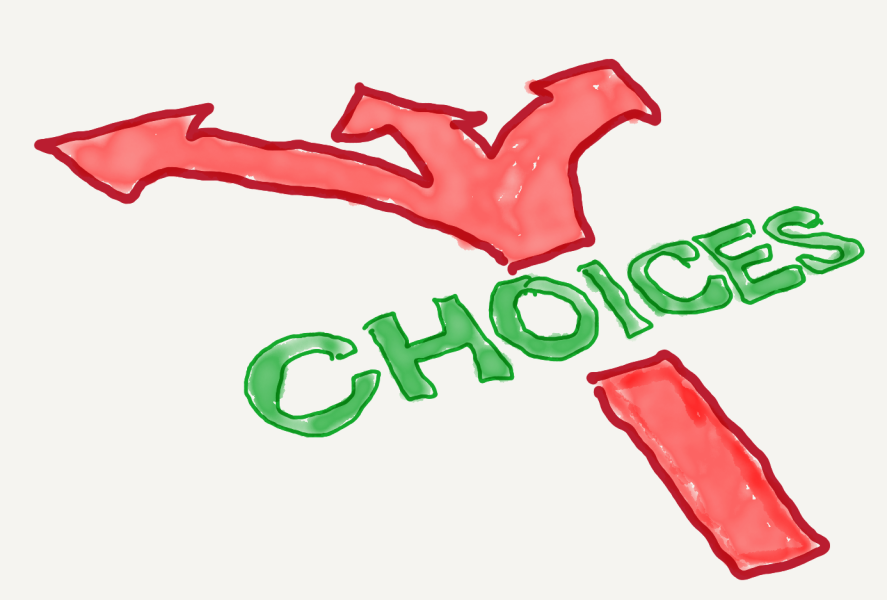
Should I kill myself, or have a cup of coffee? The famous line of the philosopher Albert Camus, explaining everything in life is a choice. A line that came to mind as I was doing my morning walks this month. Leave around 0700 and walk for an hour. Same round every day, woods behind the house. As the eye surgery has delayed success, I walked around with sunglasses, almost blind, in the dark before sunrise. I met a gentleman walking the same round every day with his dog, and we started a conversation. He clearly wondered whom this person what with sunglasses in the dark and started a conversation. I explained how I will be visually impaired for a month, hence the sunglasses. After a week of introductions, 2 males telling how important they are, we got to the next level beyond the fake it till you make it. He was hired as an interim architect to solve the technical debt of a startup. Due to the technical debt, they could not get to the scale-up phase. From a tech point of view it was doable to solve. His frustration was that all the scrum teams would cling to their old architecture, would fight over their old code like defending the last episode of Games of Thrones was great. All the teams were very autonomous, hard fight for this interim architect. Can you explain why they make these choices, Wiemer, what I can do differently? Sure, ask the blind man for insights.

Have you ever been to the USA I asked? And did you see all the advertisements for prescription medicines out there? Ever wondered why? What is the point of advertising for prescription drugs? Not to be seen in Europe. The root cause is that people in the USA want to have control, a choice over all the details of their being. This decision autonomy has led to a proliferation of options in every aspect of life. 129 choices of cereal anyone? In the case of severe illness, it also moves the responsibility for the choice from the professional, the doctor, to the patient. The question is if patients really want full control, make that choice themselves. For life-changing choices, you might want a doctor who is competent and kind. A kindness that translates in respect for the autonomy for you as a patient and at the same time does not treat that autonomy as the ultimate goal, but rather the health of you as a patient. As the interim architect, you are much like the doctor for this startup. Maybe rethink the autonomy of the scrum teams. Behave more like the doctor, less like the patient? You might find the teams will opt for voluntary simplicity.

Even if you reduce the amount of freedom for the choices for the scrum teams, you might want to know more about choices itself. It seems you look at choices from a purely logical, pure economic point of view. Thing is people don’t operate like that. Maybe check on behavioral economics, read Kahneman and Tversky. Choices are not linear. When confronted with a fundamental choice that involves risk, people treat losses different that gains. People tend to avoid risk when deciding over potential gains. They rather have 100 dollars in hand then a 50% chance at 200. Risk-averse deciding for potential benefits. For losses, it works the other way around. People would rather flip a coin and take the chance to lose 200, then take the sure loss of a 100 dollar. Taking the risk to avoid losing anything, embracing risk in the domain of potential losses. There is a neutral point somewhere between the loss and gain. The way you describe the loss and gain influences that neutral point. You might want to consider manipulations of wording to describe the loss. People choose 90% fat-free milk of milk with 10% fat anytime. Subtle different wording can have an enormous effect on how your teams make their decisions. Be the doctor, change the wording of the perceived technical choices.

You might want to do an exercise with the teams. Do a quiz, just 10 questions. Give a pen to anyone that scores over 5 correct answers. Make it an equal number of red and greens pens. Now ask the teams to trade for a different color if they want. Same value, same pen. You will see very few trades. The reason is something that you own has a higher value than what you don’t. Once something is given to you, it is yours, giving it up as part of seemingly even trade feels like a loss. “Loosing” the red pen will hurt more than “gaining” the green pen. They won’t make the trade, a phenomenon called the endowment effect. Your teams own the old architecture, own the old code. The endowment effect gets in the way of moving to the newer architecture. Be a doctor, change the wording, and make them aware of the endowment effect when making decisions on old and new. I’ll have that cup of coffee Wiemer, are you available for guidance in 2020?


Recent Comments